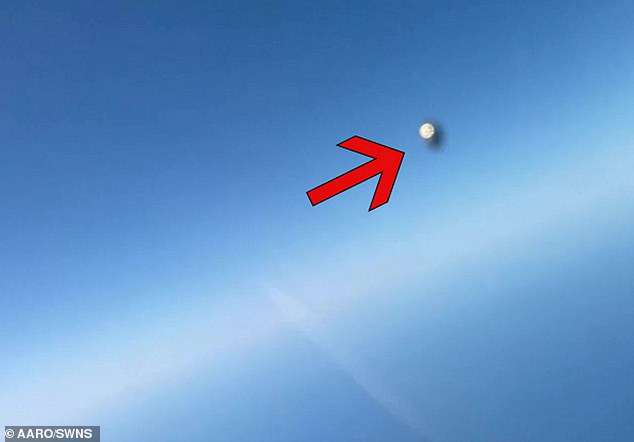What are they trying to tell us? An internal Pentagon report warns that America is not equipped to defend itself against an alien invasion
US officials do not have the capabilities to defend America against a hypothetical alien invasion, internal Pentagon watchdogs have determined.
A newly released document shows that the Department of Defense (DoD) is not making a comprehensive or coordinated effort to detect and analyze UFOs – which in recent years have been dubbed the Unidentified Anomalous Phenomena (UAP).
The Office of Inspector General (OIG) reached the chilling conclusion that this blind spot in the Defense Department’s defensive capabilities “poses a threat to the armed forces and national security.”
To address the issues identified in this report, the OIG has made eleven recommendations, including the enforcement of protection policies and the development of new tools in the event of an alien attack.
A newly released document shows that the Department of Defense (DoD) is not making a comprehensive or coordinated effort to detect and analyze UAP, such as an instance spotted by the US Navy in 2004.
“DoD efforts to identify and understand UAP have been spotty due to competing priorities, lack of substantive progress, and inconclusive findings,” reads “Review of DoD actions regarding unidentified anomalous phenomena‘, previously published August 2023.
“However, military pilots have continued to report UAP incidents despite sporadic efforts by the Department of Defense to identify, report and analyze the events.”
The 2023 report was a collection of assessments on whether the Pentagon, military departments, defense agencies and counterintelligence organizations took actions “to detect, report, collect, analyze and identify UAP.”
“DoD has not issued a comprehensive UAP response plan that identifies the roles, responsibilities, requirements, and coordination procedures for detecting, reporting, collecting, analyzing, and identifying UAP incidents,” OIG concluded.
The agency conducted the work for the review from May 2021 through June 2023 and interviewed Presidential and DoD policies, directives, and directives.
These individuals are tasked with establishing requirements for intelligence gathering, counterintelligence, troop protection, and civil liberty protection
“As a result, the DoD’s response to UAP incidents is uncoordinated and concentrated within each military branch.”
In July 2022, the Pentagon established the All-domain Anomaly Resolution Office (AARO) to handle reports of UAPs.
AARO is responsible for synchronizing and standardizing the collection, analysis and identification of UAP incidents.

Inspector General Robert P. Storch announced the declassification of the report on Thursday, noting that it was released because of “significant public interest in the Department of Defense’s handling of UAPs.”
However, in a summary of the classified report, OIG questioned the nation’s ability to organize and defend itself.
OIG found that, due to a lack of guidance at the DoD level, AARO has not developed a formal process for detecting and reporting unidentified objects in U.S. airspace.
UAPs are designated as “Special Interest Items” by military officials, who require aircrews to document and report sightings within 24 hours of shutting down their own aircraft’s engines.
Some of these unexplained observations were sent to AARO, but the messages reported noted that the DoD does not require military services for this.
“DoD components have largely excluded geographic combatant commands, which are responsible for detecting, deterring, and preventing threats and attacks against the United States and its territories, assets, and bases in their respective areas of responsibility, when developing UAP policies and procedures ‘ OIG determined in the 16-page document.

In July 2022, the Pentagon established the All-domain Anomaly Resolution Office (AARO) to handle reports of UAPs. AARO is responsible for identifying UAP incidents such as this 2023 sighting over LAX
To address the issues identified in the report, the DoD OIG said they have made eleven recommendations to the Under Secretary of Defense for Intelligence and Security.
For example, OIG recommended that the Department of Defense issue a policy to integrate roles, responsibilities, requirements, and coordination procedures related to UAP into existing intelligence, counterintelligence, and force protection policies and procedures,” the report said.
The report also suggested that the Chairman of the Joint Chiefs of Staff issue guidance to “the geographic combatant commanders regarding the detection, reporting, collection, analysis and identification of unidentified anomalous phenomena within their area of responsibility.”
“At a minimum, guidance should include tools to assist commands in determining the threats posed by unidentified anomalous phenomena.”
Inspector General Robert P. Storch announced the declassification of the report on Thursday, noting that it was released because of “significant public interest in the Department of Defense’s handling of UAPs.”
“We are releasing this unclassified summary to be as transparent as possible with the American people about our oversight of this important issue,” Storch shared in a statement.
